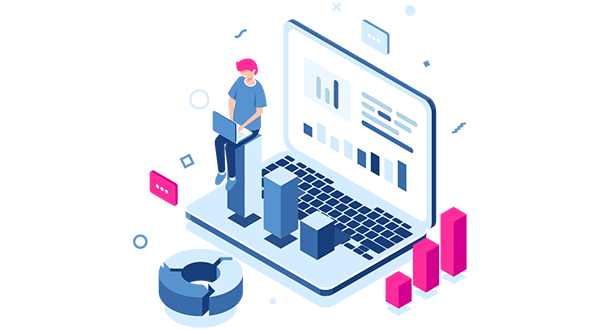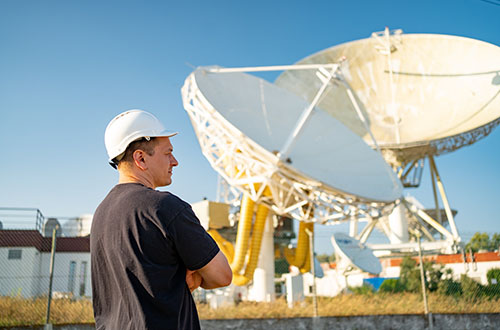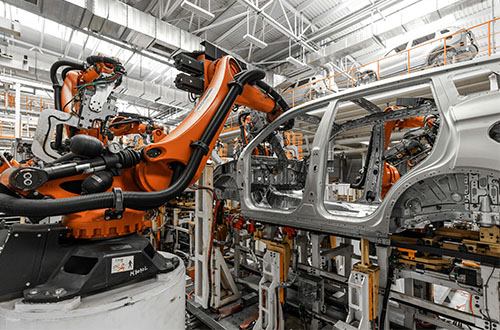

Optimizing Costs in Mainframe Modernization for the IRS

The mLogica Migration Team
The U.S. Internal Revenue Service (IRS) faces immense pressure to deliver seamless, secure, and efficient services to millions of taxpayers while managing complex, decades-old mainframe systems. As demands for digital agility, cybersecurity, and operational efficiency grow, mainframe modernization is no longer optional, it’s critical.
However, modernization can be costly without a strategic approach. By prioritizing cost optimization, the IRS can transition to modern, cloud-native infrastructure while ensuring business continuity and taxpayer trust.
This blog explores the IRS’ unique mainframe modernization challenges, key cost considerations, and actionable strategies to drive efficiency, reduce costs, and deliver long-term value.
Why Mainframe Modernization Matters for the IRS
The IRS relies on mainframes to process tax returns, manage taxpayer data, and ensure compliance with federal regulations. These systems, often built on legacy languages like COBOL and Assembler, are reliable but increasingly unsustainable due to:
- Escalating Costs: Outdated licensing models and aging hardware drive up maintenance expenses.
- Skills Shortages: Expertise in COBOL and Assembler is dwindling, making support costly and scarce.
- Integration Barriers: Legacy systems struggle to integrate with modern cloud platforms and digital services.
- Operational Rigidity: Mainframes limit scalability, hindering the IRS’s ability to adapt to evolving taxpayer needs.
Modernization offers the IRS a path to reduce technical debt, enhance cybersecurity, and unlock agility. Thoughtful execution can deliver significant cost savings and enable the IRS to meet growing demands for digital services, such as real-time tax processing and secure data management.
Key Cost-Optimization Strategies for the IRS
Mainframe modernization doesn’t have to break the budget. By leveraging automation, phased execution, and strategic planning, the IRS can modernize efficiently while minimizing disruption.
Here are five strategies tailored to the IRS’s needs:
1) Conduct a Comprehensive System Assessment
Modernization begins with a clear understanding of the IRS’ mainframe environment, including codebase complexity, interdependencies, and compliance requirements (e.g., FISMA, HIPAA). Automated discovery tools can map technical debt, prioritize high-value workloads (like tax processing systems), and identify cost-saving opportunities, such as deprecating redundant code. This assessment-first approach prevents unexpected costs and aligns modernization with mission-critical priorities.
2) Maximize Automation to Reduce Manual Effort
Manual code rewriting for COBOL or Assembler is time-intensive, error-prone, and costly. In fact, most manual rewrite projects are seriously over budget and behind deadlines or have failed completely. Automation tools can accelerate the IRS’s modernization by:
- Converting legacy code to modern languages like Java or C#
- Refactoring database logic for cloud-compatible platforms
- Eliminating obsolete code to streamline systems
For example, automated migration software has slashed labor costs by over 50% in large-scale enterprise projects. For the IRS, these automated softwares can expedite modernization of tax processing systems, reducing reliance on scarce legacy expertise while ensuring accuracy.
3) Adopt a Phased Cloud Migration Strategy
Shifting to cloud-native platforms like AWS, Microsoft Azure, or Google Cloud can lower the IRS’ hardware costs and enhance scalability. A “big bang” migration, however, risks disruption and overspending. Instead, the IRS should prioritize critical workloads, such as taxpayer data management or e-filing systems, for initial migration. Hybrid cloud models can maintain on-premises mainframes for less urgent systems while proving ROI, paving the way for broader cloud adoption. Containerized services can further reduce vendor lock-in and enable DevOps practices for ongoing efficiency.
4) Prioritize High-Impact Systems for Early Wins
Not all IRS systems deliver equal value. Modernizing applications that handle taxpayer interactions, compliance reporting, or fraud detection can yield immediate benefits, such as faster processing and improved user experiences. By focusing on these high-impact systems first, the IRS can demonstrate ROI to stakeholders, build modernization expertise, and fund later phases without straining budgets.
5) Address Skills Gaps Cost-Effectively
The shrinking pool of COBOL and Assembler experts poses a significant challenge for the IRS. Automated conversion software, such as those supporting Assembler-to-COBOL or COBOL-to-Java transformations, can reduce dependency on specialized skills. This approach ensures the IRS can modernize mission-critical systems without inflating budgets.
Case Study: A Blueprint for IRS Success
A global telecommunications provider offers a compelling example of cost-effective modernization. Facing 30 million lines of COBOL code and spiraling maintenance costs, the company adopted a phased, automation-driven approach. By prioritizing key applications, using automated refactoring tools to convert COBOL to Java, and migrating to a cloud-native platform, they achieved:
- $30 million in infrastructure and licensing savings
- 40% faster time-to-market for new service
- Zero downtime during migration
- 100% successful project
The IRS can emulate this model by targeting high-priority systems (e.g., e-filing platforms), leveraging automation, and adopting cloud solutions to reduce costs while enhancing taxpayer services.
Why the IRS Must Act Now
Modernizing mainframes is not just a technical upgrade, it’s a strategic imperative for the IRS. Delaying action risks higher maintenance costs, cybersecurity vulnerabilities, and reduced ability to meet taxpayer expectations. By acting now, the IRS can:
- Reduce Costs: Eliminate expensive legacy infrastructure and licensing fees.
- Enhance Agility: Enable faster deployment of digital services like real-time tax filing.
- Strengthen Security: Leverage cloud-native tools to meet stringent compliance standards.
- Ensure Continuity: Maintain uninterrupted services during modernization.
A Roadmap for 2025 and Beyond
Mainframe modernization is a marathon, not a sprint. For the IRS, success in 2025 hinges on:
- Assessment-Driven Planning: Map systems to prioritize high-value workloads.
- Automation at Scale: Use tools to minimize manual effort and costs.
- Phased Execution: Start with critical systems to build momentum.
- Cloud-Native Focus: Transition to scalable, cost-efficient platforms.
- Data-Driven Outcomes: Unlock analytics for better taxpayer insights.
By embracing these strategies, the IRS can modernize its mainframes cost-effectively, ensuring fiscal responsibility while keeping costs under control.








































